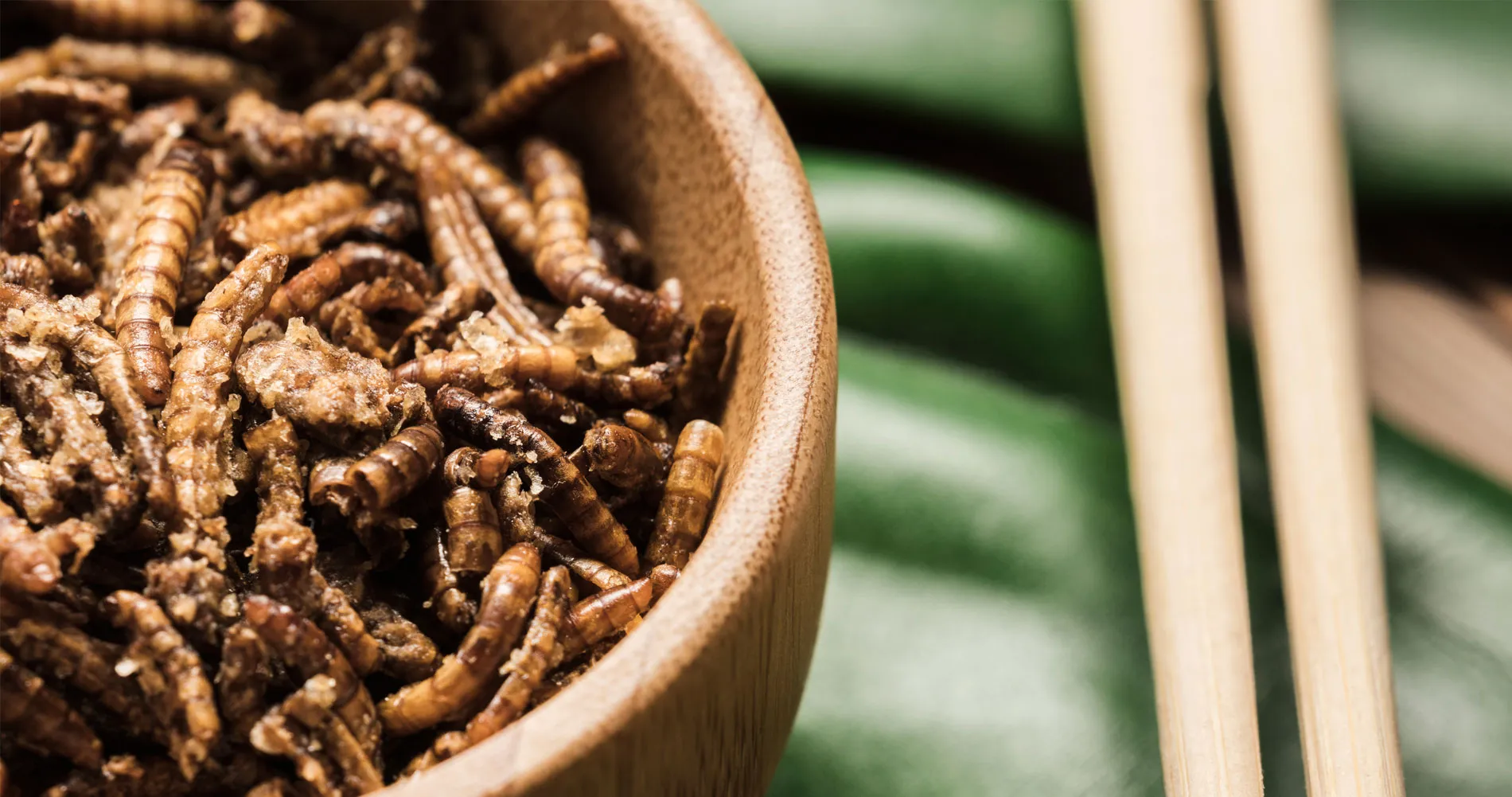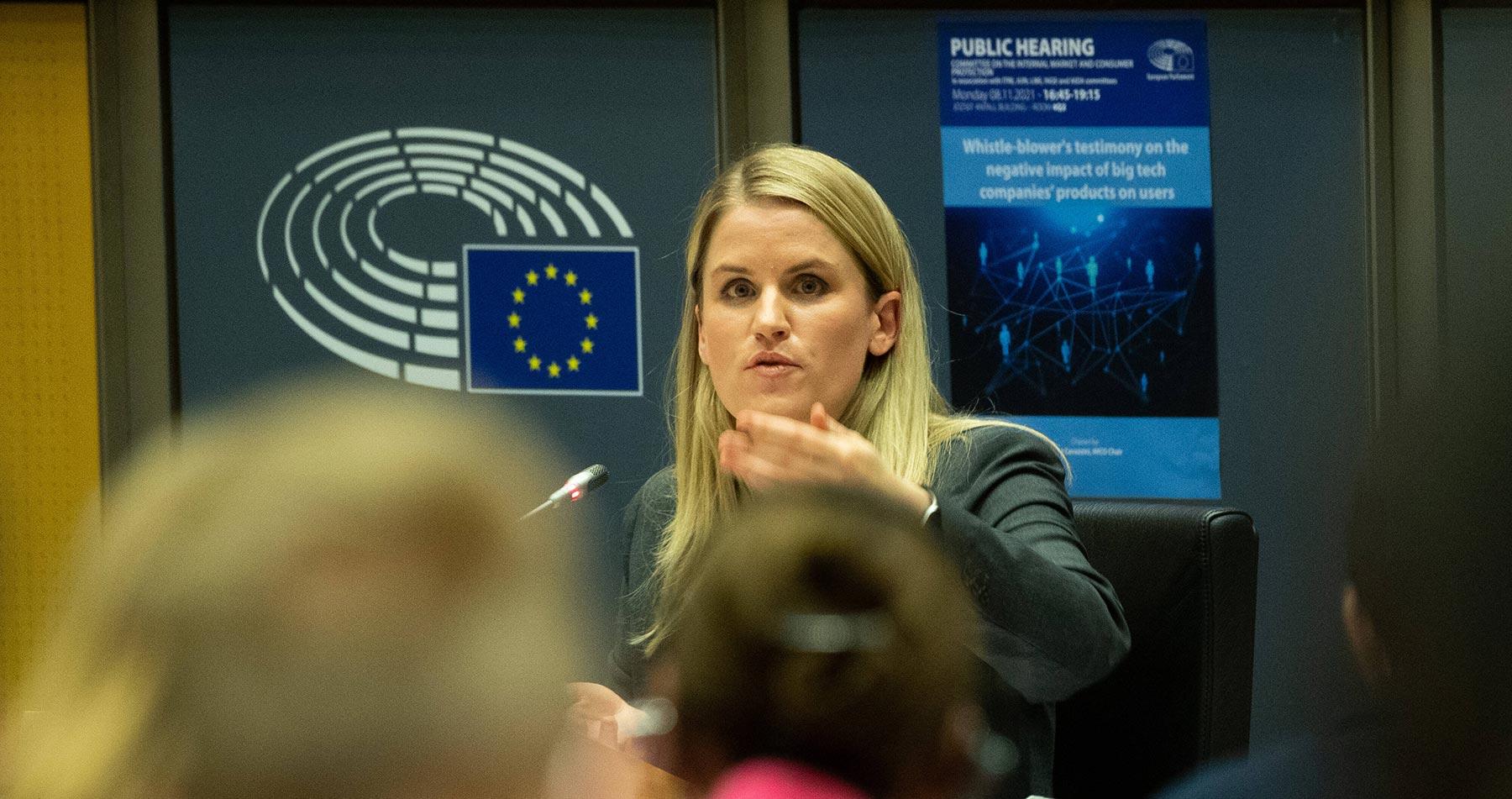Insects could soon become part of your morning toast or bowl of pasta. While first reactions may be of disgust, food-tech companies and legislators are working on producing acceptable ingredients. This follows a decision by the European Commission to approve mealworm insect powder as a food ingredient fit for human consumption. Consisting mainly of protein, fibre and fat, mealworms are regarded by some as an answer to the world’s many food supply and environmental pressures.
Bruce McMichael
14 April 2025
French version
Novel foods such as mealworms and lab-grown meat are sometimes referred to as Franken-foods, named for the character Victor Frankenstein in Mary Shelley’s gothic-horror novel Frankenstein, about a ‘monster’ created with organs harvested from various cadavers. Mealworms are often sold in pet food shops for wild and aviary birds.
The European Food and Safety Authority (EFSA) greenlighted permission for dried mealworm on 20 January 2025. Mealworms are the first species approved among 15 insects subjected to risk assessment procedures delegated to the EFSA in 2018 under a 2015 EU regulation.
Mealworms are the larval form of darkling beetles, also known as Tenebrio molitor or yellow mealworms. As a novel food, they are the first edible insect variety approved by the European Food Safety Authority. Protein content is lower than traditional dietary sources, such as red and white meat, milk, or eggs. However, they are aligned to quality plant proteins, such as rapeseed or soya.
Meanwhile, in 2013, the UN’s Food and Agriculture Organization (FAO) reflected that ‘eating insects can help tackle food insecurity’. By using bio-waste as a source of nutrition for insects, the farming process uses significantly less water than raising livestock, says the FAO. ‘For example, pigs produce 10-100 times more greenhouse gases per kilogram than mealworms’, the UN agency said.
After treatment with ultraviolet light, the processed mealworms are delivered in frozen, dried or powder form. To reach the final product, insect farmers remove eggs from mating adult beetles before feeding the larvae cereal, such as oats or wheat bran, and vegetables. To create a commercially acceptable product, mealworm larvae are dehydrated and crushed into a fine yellow powder resembling maize or gram flour.
Tasting notes suggest whole mealworms offer a nutty flavour and are not that dissimilar to almonds or macadamia nuts. At the same time, the powder presents an earthy aroma, and its flavour reminds the human palate of mushrooms.
Academic studies on the issue are plentiful, including a 2023 paper by Marianna Olivadese and Maria Luisa Dindo, two researchers from the University of Bologna, Italy. Here, they state that ‘insects were probably an important food source for early human populations, and the evidence suggests that they were eaten as part of the human diet as early as prehistoric times … the remains of insect integuments, wings, and other body parts have, however, been found in the fossilized faeces (coprolites) of ancient humans in caves in the USA and Mexico’.
Now, food manufacturers have been given the green light to include up to 4% of this protein in commonly eaten products such as bread, cheese, jam, pasta and protein bars for sportsmen and women. French company Nutriearth, which describes itself as ‘pioneering functional ingredients optimized with vitamin D3 to target human and animal health’, has been given an exclusive five-year marketing agreement for the product. The EC notes that, currently, ‘insects as foods represent a very small niche market in the EU’.
Nutriearth first made an application to the European Commission five years ago. Then, in 2023, EFSA issued a scientific opinion: that when treated with UV-light, Tenebrio molitor whole larvae powder is ‘safe under the proposed conditions and levels of use’. Foods that are expected to include mealworm might include bread and rolls, cakes, pasta, burgers, smoothies and fruit and vegetable compotes,’ that will be eaten by the general public.
For countries outside the EU such as the UK, Canada, and the US, mealworms and other edible insects have been acceptable in certain food products for some time, while in Switzerland, similar approvals have been in place since 2017.
However, in a recent report published by the European Commission notes that ‘the environmental benefits of rearing insects for food are founded on the high feed conversion efficiency of insects, less greenhouse gas emissions, less use of water and arable lands, and the use of insect-based bioconversion as a marketable solution for reducing food waste’.
The frozen form consists of water, crude protein, carbohydrates and fat, whereas the dried forms generally comprise of crude protein, fat and carbohydrates.
The go-ahead to use this often-controversial ingredient is part of the EU’s work to lessen the food system’s environmental impact, which is currently a hot-button political topic.
But such a change to our food is not without controversy. Food safety and potential allergens are key concerns.
In fact, the European Commission itself has noticeably accelerated the incorporation of edible insects into European food culture as alternative protein sources.
Alternative protein sources are actively being promoted as the world faces pressure on climate change and loss of biodiversity. Critics fear using insect protein such as mealworms is ‘putting the interests of multinationals before those of consumers and food safety’. Possible allergic reactions are also of concern. However, replicating the protein value of meat with insects will require industrialised mega-farms with the subsequent increase in waste.
Over a dozen applications are currently sitting on EFSA’s table for evaluating food derived from edible insects. Among them, foods such as black soldier fly meal (Hermetia illucens larvae) in whole, blanched, and dried form; nests of drones of honeybees (Apis mellifera male pupae); house cricket powder (Acheta domesticus) and protein powders from the larvae of the lesser flour worm (Alphitobius diaperinus) are already at the risk assessment stage.
Other alternative protein sources include lab-grown meat, created by using animal stem cells, and fungi-derived mycoprotein. Other novel foods that may or may not reach our dinner plate include fermenting bacteria found in cheese and similar foods and using Antarctic Krill oil.
Meat: The Future is the title of a 2021 report from the World Economic Forum. In it, the authors argue that the global rise in demand for animal-derived protein (particularly beef, chicken and pork) could put meeting the SDGs and Paris Climate Agreement targets at risk. ‘Currently, animal-based protein provides 40% of the world’s protein supply through meat, fish and dairy products such as eggs and milk,’ the paper’s authors observe.
‘However, as meat-based protein (for instance, beef, lamb, pork and chicken) is tasty, protein-rich and energy-dense, it is the preferred or aspirational way for a significant part of the global population to consume protein. Consequently, as the population grows and the world becomes richer and more urbanized, demand for meat-based protein is growing fast.’
The waste from the production of mealworms and mealworm flour is minimal. These larvae feed off organic matter, and their excrement is an excellent natural fertiliser. Besides, the production is quick. Tenebrio molitor larvae develop over just one to two months.
Ultimately, popular cultural perceptions and consumer acceptance, as well as new cookbooks, food influencers, and innovative ideas from interested chefs, will determine the success, or not, of this novel food ingredient.
Picture: A dish of worms © freepik























